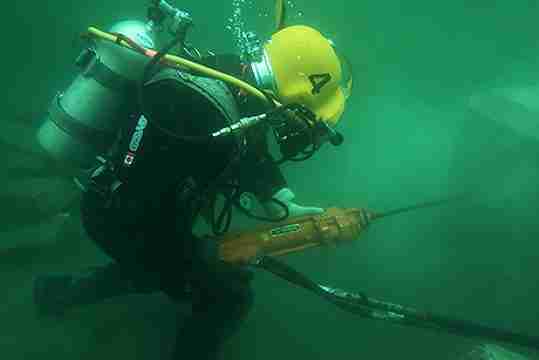
Construction diving, the backbone of underwater construction projects, requires a unique blend of skills, equipment, and cutting-edge technology to guarantee safety, efficiency, and accuracy. This field has witnessed remarkable progress in recent years, with the introduction of groundbreaking tools and techniques that elevate divers’ capabilities and optimize project outcomes. From underwater welding to meticulous inspections, advancements in equipment and technology have revolutionized construction diving, making it not only safer and more productive but also environmentally conscious.
Underwater Welding: Forging Stronger Underwater Structures:
Underwater welding remains a core function in construction diving, critical for maintaining and repairing submerged structures. Traditional methods were fraught with challenges, including limited visibility, diver fatigue, and inefficiency. However, recent innovations in welding technology have transformed this process, paving the way for faster, more precise, and long-lasting welds.
One such innovation is the development of next-generation welding electrodes specifically designed for underwater environments. These electrodes boast improved arc stability, reduced hydrogen content, and increased deposition rates, allowing divers to complete welding tasks with greater efficiency and reliability. Additionally, the introduction of automated welding systems eliminates the need for manual intervention, reducing diver fatigue and ensuring consistent weld quality across the board.
Subsea Robotics: Expanding the Diver’s Toolkit:
Subsea robotics, encompassing remotely operated vehicles (ROVs) and autonomous underwater vehicles (AUVs), have become essential tools in construction diving operations. These robotic systems are equipped with cameras, manipulators, and various sensors, allowing them to perform a wide range of tasks, from inspection and maintenance to construction and installation.
ROVs, controlled by operators on the surface, excel in tasks demanding precision and dexterity, such as intricate inspections and delicate manipulations. On the other hand, AUVs operate independently, following pre-programmed routes to gather data, map underwater terrain, and identify potential hazards. By working together, these robotic platforms complement traditional diving techniques, enhancing safety, efficiency, and the overall success of projects.
Advanced Underwater Imaging Systems: Seeing Clearly for Superior Results:
Visibility remains a critical factor in construction diving, significantly impacting the speed and quality of underwater operations. Advancements in underwater imaging systems have addressed this challenge, providing divers with clear, high-definition visuals of submerged structures and their surroundings.
High-resolution sonar systems, equipped with sophisticated signal processing algorithms, can pierce through murky water conditions, revealing detailed images of underwater terrain and infrastructure. Similarly, underwater cameras with enhanced low-light performance and image stabilization capabilities offer divers superior visibility, facilitating precise navigation and inspection tasks.
Environmental Monitoring Technologies: Diving into Sustainability:
In the realm of construction diving, environmental monitoring plays a crucial role in ensuring compliance with regulations and minimizing the impact of underwater activities on marine ecosystems. Technological advancements in this area have led to the development of innovative monitoring solutions that provide real-time data on water quality, marine life, and habitat integrity.
Sensor networks deployed across underwater construction sites continuously monitor parameters such as water temperature, salinity, and dissolved oxygen levels, alerting operators to any deviations from baseline conditions. Additionally, acoustic monitoring systems track the presence and behavior of marine species, helping mitigate potential disturbances and safeguard biodiversity.
Final Thoughts:
As construction projects continue to push the boundaries of underwater exploration and development, the need for innovative equipment and technology in diving operations becomes increasingly critical. From advancements in underwater welding to the integration of subsea robotics and advanced imaging systems, these innovations empower divers to tackle complex challenges with confidence and precision. Construction Diving
Looking ahead, ongoing research and development efforts promise to further enhance the capabilities of construction diving, unlocking new possibilities for underwater construction, maintenance, and exploration. By embracing these technological advancements and prioritizing safety and sustainability, the construction diving industry is poised to pioneer the future of underwater engineering and infrastructure development.